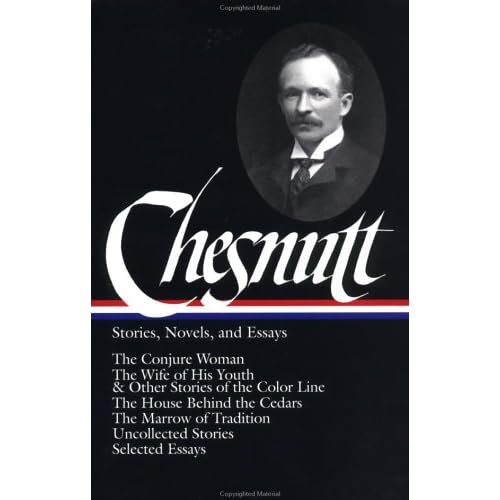Book Review: Go White, Young ManPosted in Articles, Book/Video Reviews, History, Law, Media Archive, Passing, Slavery, United States on 2012-02-24 22:02Z by Steven |
Book Review: Go White, Young Man
Vanderbilt Law Review
Volume 65, En Banc 1 (2012-01-30)
10 pages
Alfred L. Brophy, Judge John J. Parker Distinguished Professor of Law
University of North Carolina School of Law
Daniel J. Sharfstein. The Invisible Line: Three American Families and the Secret Journey from Black to White. New York: Penguin Press, 2011. 415 pp. Hardcover ISBN: 9781594202827.
Sharfstein’s book follows three families whose members at some point crossed the color line separating black from white—or tried and failed to. These case studies tell us what it is to be American—how race is central to our identity, how we use race to take down opponents or to exclude—and how the line separating black and white is sometimes porous. However, is not the story of race and American legal history about the ways that race is defined by law and by norms? Race mattered because people policed the line separating blacks and whites. That many states classified people with a small percentage of African ancestry as white suggests that it was possible to move across the color line. Still, the cases where the color line was policed, rather than crossed, are significant.
Our nation’s struggle with race is now about one-third of a millennium long. So there is a lot for Daniel Sharfstein’s epic work of American history, The Invisible Line, to engage as it sweeps across centuries—from Virginia in the 1600s to Washington, DC, in the 1950s—and as it details generations of lives, from humble farmers in Appalachia to heirs of Gilded Age merchants. Where most other people who have looked at such issues focus on the chasm between white and black, Sharfstein looks at people on the line separating black and white. He is able in this way to get at key—and often overlooked—issues, such as how people have crossed the color line in America and what efforts to cross and police it tell us about our national struggle with race and with equality.
To detail the sine curve of attitudes towards race, Sharfstein offers three case studies of how racial categorization has functioned and how it kept (or attempted to keep) African-Americans in their place. The book follows three families whose members at some point crossed the line separating black from white—or tried and failed to. Sharfstein’s elegant prose illuminates how the color line functioned for people on both sides of it. For those who could do so, there were great incentives to claim to be white rather than black. In one era, race could define who might be a slave; in later eras, it was central to who could live in desirable locations, who could go to the most desirable schools, who could have access to the best government jobs. From statutes to social norms, African-Americans were told that they were inferior and had to maintain their place. Thus, those who might pass for white—those who had light enough skin color and perhaps the geographic mobility to mask their family history—often did so.
Some of the story of passing is well known. President Warren G. Harding is said to have remarked in response to an allegation that he had African ancestry, “How do I know? One of my ancestors may have jumped the fence.” Some of the best-known literature of the Jim Crow era was about crossing the color line, like Nella Larson’s Passing. And even antebellum literature often addressed the crossing of the line from black to white. Uncle Tom’s Cabin, for instance, has a vignette about a light-skinned former slave who passed for white. Yet, even though we know that families crossed the color line (or attempted to), one wonders if the most important lessons from Sharfstein’s book are the ways the line was successfully policed rather than the ways it was crossed…
…We learn a great deal about the policing of the color line in Sharfstein’s book. Attempts to prevent passing sometimes failed, as in the Regulator Movement and in the Spencers’ Appalachia. In both of those cases, opponents of families who had once been identified as African-American unsuccessfully claimed that they were still African-American. But Sharfstein illustrates numerous occasions when the line was successfully policed: in Washington, DC, after Reconstruction, when O.S.B. Wall helped lead a western exodus movement; in the early twentieth century, when disfranchisement of blacks led to loss of representation in Congress and loss of civil service jobs, such as Stephen Wall’s at the Government Printing Office; and when an heir to the Field fortune—who, as a member of the Gibson family, had some African ancestry—put on a display at the Field Museum about the races of mankind.
We learn that statutes helped police the color line. For instance, statutes defined the blood quantum that permitted one to be considered white. Yet even when statutes defined one as black, social norms often classified a person as white. Sharfstein makes a bold statement about the porous nature of the color line in regard to slavery: “The difference between black and white was less about ‘blood’ or biology or even genealogy than about how people were treated and whether they were allowed to participate fully in community life. Blacks were the people who were slaves, in fact or in all but name; the rest were white.” This argument shifts the basis for being considered black from blood quantum to status—though the two were often highly correlated…
Read the entire review here.

